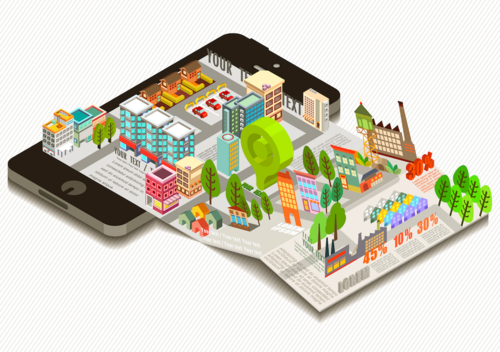Nov 17, 2016
The Smart City or Citizen: Which comes first?

By 2030, 60% of the world’s population will be living in megacities. With these massive population shifts come questions and concerns about the future of our built environments. Many have pointed to smart cities as the solution to our future urban development.

Like so many of the buzz phrases over the past several decades, the concept of smart cities originated from the sales teams of large tech firms. Amidst the financial crisis of 2008, large tech firms like IBM and Cisco desperately needed a new customer base. Luckily, governments across the globe had started to increase stimulus spending. From this, IBM created the “Smart Planet” initiative, wherein the technology of multinational corporations could be utilized by local governments worldwide.
Although many of the other large tech firms followed IBM, this strategy has proven to be less successful than hoped - localized governments cannot successfully implement large, integrated service delivery platforms. However, this concept that applying intelligent, connected systems could make the world a better place took hold of the conversation surrounding the future of our cities, and with this, the smart city craze was born.
Over the past decade, there’s been a massive roll out of smart city initiatives across the globe. Tech firms and government officials have promoted this vision of a hyper connected urban infrastructure; one where IoT devices like sensors, smart lights, and smart meters gather data that can be analyzed to better understand the city’s infrastructure, population, and public services. A growing number of local and national government municipalities have invested in this vision of the future, hiring large tech firms to implement smart city infrastructure in their cities.
However, some have been quick to highlight the flaws in this method of smart city implementation - most notably Anthony Townsend, a research director at the Palo Alto-based Institute for the Future and author of “Smart Cities: Big Data, Civic Hackers and the Quest of a New Utopia”. Townsend’s major complaint is rooted in the “top-down" system of these plans. He believes that for smart cities to grow and thrive, they require a more natural, “bottom-up” system. The analogy he uses in “Smart Cities” captures the fundamental difference he sees between the two systems:
“These model smart cities are like mainframes where everything’s going to a central place. There’s one suite of software that dictates how everything works and can be very carefully engineered. But our ‘smart’ cities are going to look much more like the Web, where there’s going to be a lot of things deployed by individual decision, talking to each other through open standards in very ad hoc, loosely knit ways”.
When you design a city in an open grid format where citizens have the ability to customize the pieces that are relevant to them, a complex and rich system is created - a system where innovation can flourish. Townsend explains that this ad-hoc style of city development will result in a messy, but incredibly diverse and creative society.
The nature of connectivity is changing at the same pace people are moving to cities and we need a system that matches this pace. Townsend points to several reasons why relying first on a platform, instead of the people will not solve problems. First, large tech companies do not possess the city specific knowledge that its residents do. Citizens have an intimate relationship with the intricacies of their city and community, a relationship that allows them to design effective solutions to their every day problems. Second, when you hand over control of your city's development to one group, you will inevitably exclude a segment of the population. They will then live in a city that was not designed with them, or for them. Finally, and perhaps most importantly, these large scale projects often involve the company in the future maintenance of the infrastructure. This means that the workings of the city may be controlled in an entirely different location, one that may be run by a different government.
Still it's important to recognize that the future prosperity of our cities relies on some combination of these two systems - where the platform works with the people. Also, the ideas that arise from grassroots approaches are rarely perfected to a level where they can be of use to their broader urban ecosystem. The bottom-up system is inherently tailored to meet the needs of its city, therefore it's difficult to implement these ideas in other cities. Large tech firms have the capabilities and experience to help scale these ideas.
This bottom-up approach to smart cities is at the heart of the entrepreneurial mindset. It's the belief that given the right idea, the individual can make a significant difference. "For the people, by the people". If you want to see this in action, look no farther than the impressive cohort of entrepreneurs that we work with everyday. I raise a glass to the entrepreneurial citizens around the globe that in ways big and small have already contributed to the cities of our future.
Bottoms-up!
Tagged: metaprop
